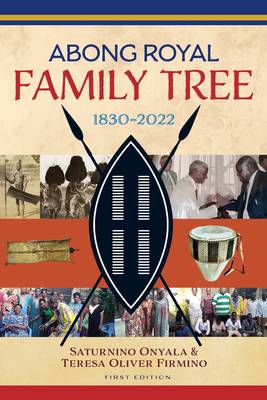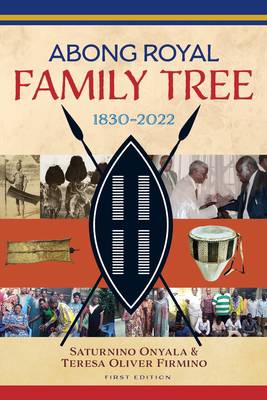
- Retrait gratuit dans votre magasin Club
- 7.000.000 titres dans notre catalogue
- Payer en toute sécurité
- Toujours un magasin près de chez vous
- Retrait gratuit dans votre magasin Club
- 7.000.000 titres dans notre catalogue
- Payer en toute sécurité
- Toujours un magasin près de chez vous
Description
In this book Saturnino Onyala, with assistance of Teresa Alal Oliver Firmino, describe the family origin and relationship that exist among the Abong people since 1830 to 2022. They have explored the first grandparents of the Abong people and demonstrate from which grandparents of the Abong of today have descend from. This is historical facts, which were not written, and the new generation do not know and understand its impacts. The book presents fresh perspective on a frequently misrepresented subclan identity and facts, and it offers a platform for the new generations and sociologists to widen their knowledge about Abong royal family.
The Authors collect the information about Abong family starting from chief Agunya down to the present generation and make it accessible and available.
In Abong Royal Family Tree, we internationally own the origin, photos, and Abong family profile. The photos that show some of Abong members are owned and must not be copied by any writer without obtaining permission from the authors.
We are always promising to ourselves that we are going to get on top of our family tree, as we juggle the commitments in our busy lives with Covid-19, the idea of family tree gets pushed to the bottom of the list.
The authors understand the challenges of trying to write this book, they used this experience to connect, develop inspirational and effective approach to Abong Royal Family Tree. From this book it is easy for the readers to view Abong relationship both vertically and horizontally.
The book describes details of Abong family profile. This is a holistic family relationship that has not been studied and documented. This is a must-read book for anthropologists, sociologists, and Abong family members including nephews and nieces.
The book offers an opportunity for world population, men, women, boys, girls, nephews, in-laws and nice of Abong subclan to understand the important of blood relationship and how to work together for the betterment of subclan and community.
The materials used in this book are based on telephone conversations, emails, and task messages with Abong people -both young and old. This method is used because the Abong people are scattered all over the world.
The authors begin this book by tracing chieftainship from the old days to the present day. The book describes that the Abong in the old days were known of their humbleness, togetherness, and support for one another. The book examines how the new generation tend to care less about family and social relationships.
The book reveals that the Abong chiefs have ruled Obbo's people from 1785 to 1987.
The authors want to pass this rich knowledge of Abong unique royal family tree and chieftainships to all readers around the world.
Spécifications
Parties prenantes
- Auteur(s) :
- Editeur:
Contenu
- Nombre de pages :
- 398
- Langue:
- Anglais
Caractéristiques
- EAN:
- 9780648436751
- Date de parution :
- 03-08-22
- Format:
- Livre broché
- Format numérique:
- Trade paperback (VS)
- Dimensions :
- 152 mm x 229 mm
- Poids :
- 712 g







